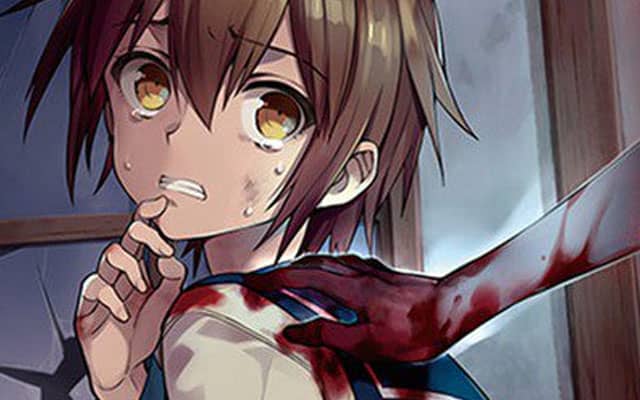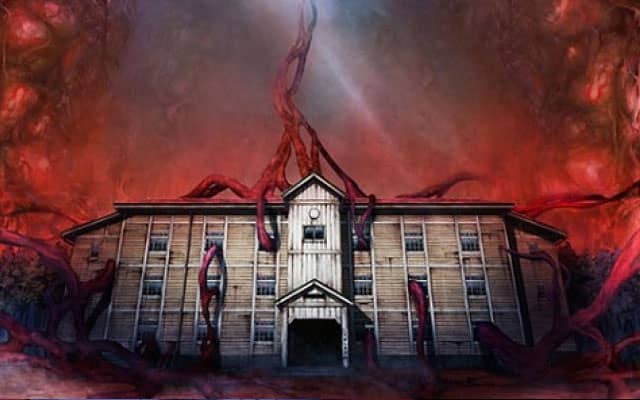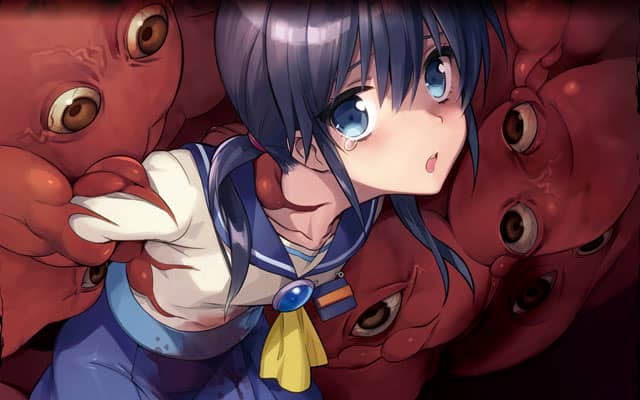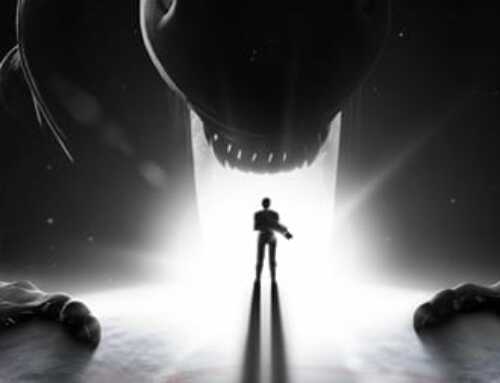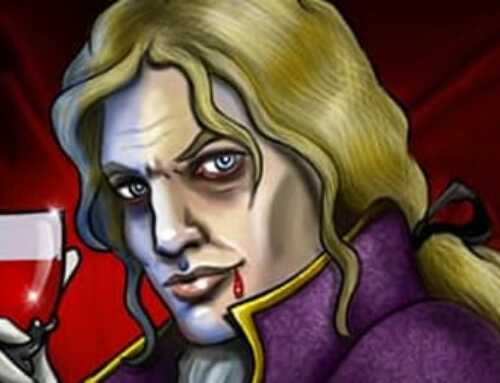Japan loves “Corpse Party.” Over there, the game franchise has spawned numerous sequels, multiple film and television adaptations, and even attractions at theme parks. Over here in America though, it’s more or less unheard of. Some of the games have been released here before, such as the “Corpse Party Book Of Shadows” on the PlayStation Portable, and an iOS port of a remake of the original, but none of these ever really made much of a splash. Maybe it was the lack of marketing, maybe it was the choice of platforms to release them on. I don’t know. What I do know, however, is that on October 25, 2016, a definitive edition of the original game (rather, an updated version of an updated version of an updated version of the original “Corpse Party”) was released on the Nintendo 3DS. This version features all of the updates from past versions and then adds more onto there. I’ve been looking forward to this game since its original intended release in 2015, so join me as I finally sink my teeth into it.
“Corpse Party” takes place inside of a school that is kind of multiple different schools. You see, once upon a time in Tokyo there was an elementary school called Heavenly Host Elementary. After a series of strange events culminating in the murder of several children, Heavenly Host was shut down and then demolished. Sometime later, a high school was built on the grounds of what used to be Heavenly Host. The game begins with a group of students who have snuck into the high school after dark to hang out one last time before one of them moves away. At the end of the evening, they decide to do a silly little “magic ritual” that will supposedly bond them together as friends forever. However, upon completing the ritual, an earthquake rocks the school, and the floor opens up and the students (along with a teacher) fall down into the chasm, only to wake up and find themselves in the long-since demolished Heavenly Host Elementary. The player then takes control of the students as they search for a way out of the ghostly school, all the while trying to avoid the angry ghosts therein. Between the eight students and the teacher, that makes nine characters and I’m not going to describe them all, but they manage to put some interesting spins on Japanese stock characters (such as the peppy one, the superstitious one, the coward, etc.).
“Corpse Party” employs a deliberately anachronistic visual style. It retains the same 16 bit graphic style that was used back in the 90s when the very first version of the game was released. This intent behind this was to make the players fill in the gaps of exactly how horrible some things are for themselves. I can see why they did that, too. I think a somewhat realistic looking pile of guts is not going to get the same rise out of me that a lumpy red abstraction described as being the result of someone hitting a wall at intense speed will. There are occasionally cuts to more detailed images, and frankly I find those a little off-putting. It throws me out of the otherwise spot-on look of something old and weird and possibly best left forgotten. I also want to note that there are a lot of nice little touches with the images. Like after one character vomits, the front of her clothes become discolored. Sure, changing the color of a few pixels on the sprite isn’t going to be noticed if they don’t do it. But they did do it, and I appreciate that attention to detail.
There is voice acting in “Corpse Party.” It is, however, entirely in Japanese so I don’t know for certain how well these actors are actually doing. They seem to be getting across the right sorts of emotions without coming across as over the top, though, so I’m gonna go ahead and say they’re probably doing well. The game’s score is fairly unique. It uses a mix of symphonic and electric elements to create a wonderfully odd sound. Odd in a good way. It’s distinctive and more importantly it is effective. If you purchase the “Back To School” edition of the game, then you get a CD copy of the soundtrack included. I’m listening to it right now and I know that I will listen to this pretty often. And I am not the sort of person who normally listens to video game soundtracks just on their own.
“Corpse Party” is perhaps the earliest example of a certain sort of horror game created in RPG Maker. If you’ve played other games of this sort (like “Misao,” “Mad Father,” “Witch’s House,” or my personal favorite “Yume Nikki”) then comparisons are inevitable. However, let’s not do that. There are enough distinctions (and the fact that the original “Corpse Party” is a good decade or so older than that RPG Maker horror boom) that it really needs to be judged on its own. Most of the game is spent just walking around the school, searching for a way out. In the process you also collect items, solve basic puzzles, and flee from pursuing ghosts. There’s not a ton of mechanical complexity to any of this. However, the game isn’t about mechanical complexity. Instead, this is a game that knows exactly what it wants to do, and it does only that. Moreover, it does that one thing so well that any additions would just drag it down. “Corpse Party” is a game stripped down to the absolute basics of what a horror game is, and that is perhaps its greatest strength.
Was “Corpse Party” for the Nintendo 3DS worth all of the delays along the way? Yes. There is no question in my mind that this game was worth the wait. In a recent review, I lamented that the game “Inside” didn’t have the conviction to truly be itself. “Corpse Party” succeeds so well because it is completely unashamed of what it is. This game is an absolute must-have for any fan of Japanese horror, or even just fans of odd and unique games. Everyone should come on down and join the corpse party.
A NOTE TO PARENTS: Despite its cartoonish, anime-inspired art, “Corpse Party” is most definitely not a game for children. There is some pretty horrific violence and gore, and there’s also some sexual content. It’s a great game, but keep it away from any kid who you wouldn’t allow to watch “The Devil’s Rejects.”


